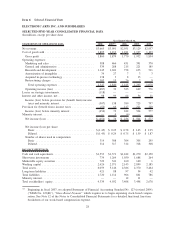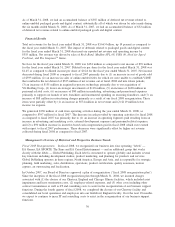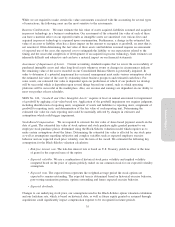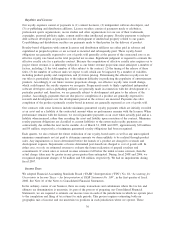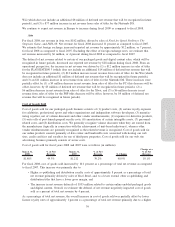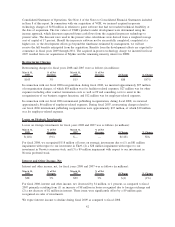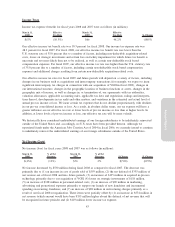Electronic Arts 2008 Annual Report Download - page 110
Download and view the complete annual report
Please find page 110 of the 2008 Electronic Arts annual report below. You can navigate through the pages in the report by either clicking on the pages listed below, or by using the keyword search tool below to find specific information within the annual report.In certain countries, from time to time, we decide to provide price protection for both our PC and video game
system products. When evaluating the adequacy of sales returns and price protection allowances, we analyze
historical returns, current sell-through of distributor and retailer inventory of our products, current trends in
retail and the video game segment, changes in customer demand and acceptance of our products, and other
related factors. In addition, we monitor the volume of sales to our channel partners and their inventories, as
substantial overstocking in the distribution channel could result in high returns or higher price protection costs
in subsequent periods.
In the future, actual returns and price protections may materially exceed our estimates as unsold products in
the distribution channels are exposed to rapid changes in consumer preferences, market conditions or
technological obsolescence due to new platforms, product updates or competing products. For example, the
risk of product returns and/or price protection for our products may continue to increase as the PlayStation 2
console moves through its lifecycle. While we believe we can make reliable estimates regarding these matters,
these estimates are inherently subjective. Accordingly, if our estimates changed, our returns and price
protection reserves would change, which would impact the total net revenue we report. For example, if actual
returns and/or price protection were significantly greater than the reserves we have established, our actual
results would decrease our reported total net revenue. Conversely, if actual returns and/or price protection were
significantly less than our reserves, this would increase our reported total net revenue. In addition, if our
estimates of returns and price protection related to online-enabled packaged goods products change, the
amount of net deferred revenue we recognize in the future would change.
Significant judgment is required to estimate our allowance for doubtful accounts in any accounting period. We
determine our allowance for doubtful accounts by evaluating customer creditworthiness in the context of
current economic trends and historical experience. Depending upon the overall economic climate and the
financial condition of our customers, the amount and timing of our bad debt expense and cash collection could
change significantly.
Fair Value Estimates
The preparation of financial statements in conformity with accounting principles generally accepted in the
United States often requires us to determine the fair value of a particular item in order to fairly present our
financial statements. Without an independent market or another representative transaction, determining the fair
value of a particular item requires us to make several assumptions that are inherently difficult to predict and
can have a material impact on the conclusion on the appropriate accounting.
There are various valuation techniques used to estimate fair value. These include (1) the market approach
where market transactions for identical or comparable assets or liabilities are used to determine the fair value,
(2) the income approach which uses valuation techniques to convert future amounts (for example, future cash
flows or future earnings) to a single present amount, and (3) the cost approach which is based on the amount
that would be required to replace an asset. For many of our fair value estimates, including our estimates of the
fair value of acquired intangible assets, acquired in-process technology and equity instruments granted for
services, we use the income approach. Using the income approach requires the use of financial models which
require us to make various estimates including, but not limited to (1) the potential future cash flows for the
asset, liability or equity instrument being measured, (2) the timing of receipt or payment of those future cash
flows, (3) the time value of money associated with the delayed receipt or payment of such cash flows, and
(4) the inherent risk associated with the cash flows (risk premium). Making these cash flow estimates are
inherently difficult and subjective, and, if any of the estimates used to determine the fair value using the
income approach turns out to be inaccurate, our financial results may be negatively impacted. Furthermore,
relatively small changes in many of these estimates can have a significant impact to the estimated fair value
resulting from the financial models or the related accounting conclusion reached. For example, a relatively
small change in the estimated fair value of an asset may change a conclusion as to whether an asset is
impaired.
34






